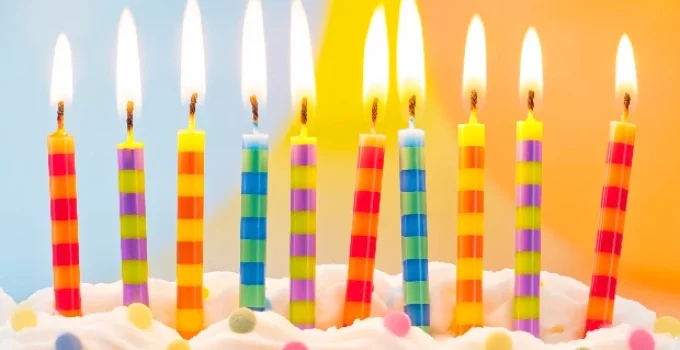Dive Deeper
- What Is a Chemical Reaction?
- How Can You Tell a Chemical Reaction Is Happening?
- 20 Real-Life Examples of Chemical Reactions
- Chemical Reactions vs. Physical Changes
- Why Do Chemical Reactions Matter?
- 🎯 Final Thoughts
- 📚 References
What Is a Chemical Reaction?
A chemical reaction happens when substances (called reactants) combine or break apart to form new substances (called products) with different properties. These changes are not just mixing or melting—they involve a rearrangement of atoms to create something new.
🧠 Science fact: During a chemical reaction, the atoms themselves don’t change, but they do rearrange into new molecules.
How Can You Tell a Chemical Reaction Is Happening?
Scientists use clues to tell if a chemical reaction is taking place. Here are the most common signs:
- Color change (like an apple turning brown)
- Gas production (bubbles or fizzing)
- Temperature change (it gets hotter or colder)
- Light emission (like a glow stick)
- Precipitate formation (a solid forms in a liquid)
- Change in smell or taste
- Irreversibility (it’s hard to undo)
⚠️ A good rule: If something new is made and it can’t go back to the way it was easily, it’s probably a chemical reaction.
20 Real-Life Examples of Chemical Reactions
Here are 20 real-world examples you might see every day:
| # | Example | Reaction Type | Description |
|---|---|---|---|
| 1 | Baking a cake | Thermal decomposition | Heat causes ingredients to chemically change. |
| 2 | Rusting iron | Oxidation | Oxygen reacts with iron to form rust. |
| 3 | Digesting food | Enzymatic hydrolysis | Enzymes break down food molecules. |
| 4 | Fireworks | Combustion | Chemical compounds explode, releasing colors and light. |
| 5 | Vinegar + baking soda | Acid-base reaction | Carbon dioxide gas forms and bubbles up. |
| 6 | Burning wood | Combustion | Heat and oxygen create smoke and ash. |
| 7 | Photosynthesis | Endothermic synthesis | Plants turn sunlight, water, and CO₂ into sugar and oxygen. |
| 8 | Apple browning | Enzyme oxidation | Oxygen reacts with enzymes in fruit. |
| 9 | Lighting a match | Exothermic reaction | Friction starts a rapid chemical change. |
| 10 | Glow stick activation | Chemiluminescence | Light is released during a reaction. |
| 11 | Cooking eggs | Protein denaturation | Heat changes the structure of proteins permanently. |
| 12 | Candle burning | Combustion | Wax reacts with oxygen to produce heat, light, CO₂. |
| 13 | Car engine running | Combustion | Fuel burns in a controlled explosion. |
| 14 | Milk souring | Bacterial fermentation | Bacteria create lactic acid, changing the milk. |
| 15 | Antacid + stomach acid | Neutralization | Acid and base cancel each other out. |
| 16 | Bleach removing stains | Oxidation | Bleach reacts with color molecules. |
| 17 | Fruit ripening | Ethylene-induced reaction | Chemicals inside the fruit change as it ripens. |
| 18 | Hair dye working | Redox reaction | Hair dye changes the natural pigments chemically. |
| 19 | Batteries generating power | Electrochemical reaction | Electrons move during a chemical change. |
| 20 | Soap scum forming | Precipitation | Calcium in hard water reacts with soap. |
Chemical Reactions vs. Physical Changes
It’s easy to mix up physical changes with chemical reactions, but here’s a simple comparison:
| Type of Change | Example | What Happens |
|---|---|---|
| Physical | Melting ice | No new substance, just a state change. |
| Chemical | Burning paper | New substances form (ash, smoke, gas). |
If you can reverse it easily, it’s likely physical. If not, it’s probably chemical.
Why Do Chemical Reactions Matter?
Chemical reactions are essential to life and technology:
- In your body: They help you breathe, digest, and think.
- In the environment: Plants use them to grow and make oxygen.
- In industry: They make medicine, fuel, plastic, and more.
- In cooking: Every meal you make uses chemistry.
🌍According to the National Institutes of Health, trillions upon trillions of chemical reactions occur in your body everyday.
🎯 Final Thoughts
So, what are chemical reactions? Chemical reactions are happening all around you—and even inside you! From baking cookies to digesting lunch, chemistry helps turn one thing into another. Learning to spot the signs of a chemical reaction helps you understand how the world works. And once you start noticing them, you’ll see that chemistry really is everywhere.
📚 References
📖Zumdahl, S. S., & Zumdahl, S. A. (2013). Chemistry: An Atoms First Approach. Cengage Learning.
💻American Chemical Society. (2023). “What Is a Chemical Reaction?” Retrieved from: https://www.acs.org/middleschoolchemistry/lessonplans/chapter6/lesson1.html
💻U.S. Department of Energy. (2022). “Chemical Reactions in Everyday Life.” Retrieved from: https://www.energy.gov
💻National Institute of General Medical Sciences. (2021). “Chemical Reactions and the Human Body.” https://www.nigms.nih.gov/
💻Lewis T, Stone WL. Biochemistry, Proteins Enzymes. [Updated 2023 Apr 24]. In: StatPearls [Internet]. Treasure Island (FL): StatPearls Publishing; 2025 Jan-. Available from: https://www.ncbi.nlm.nih.gov/books/NBK554481/
